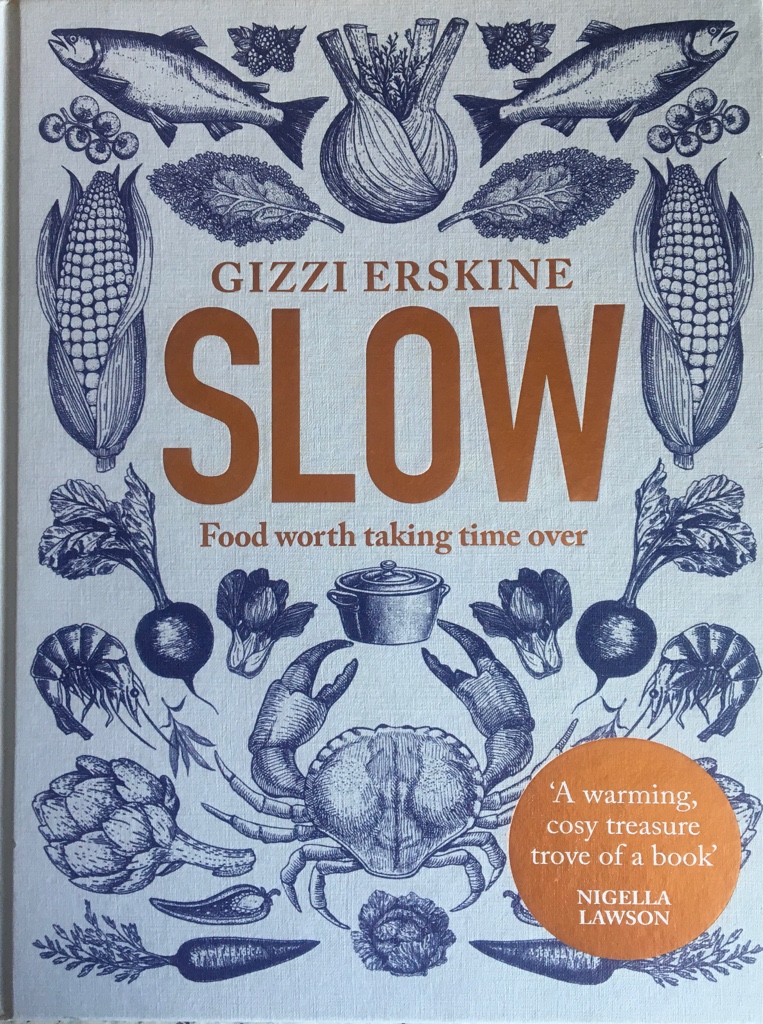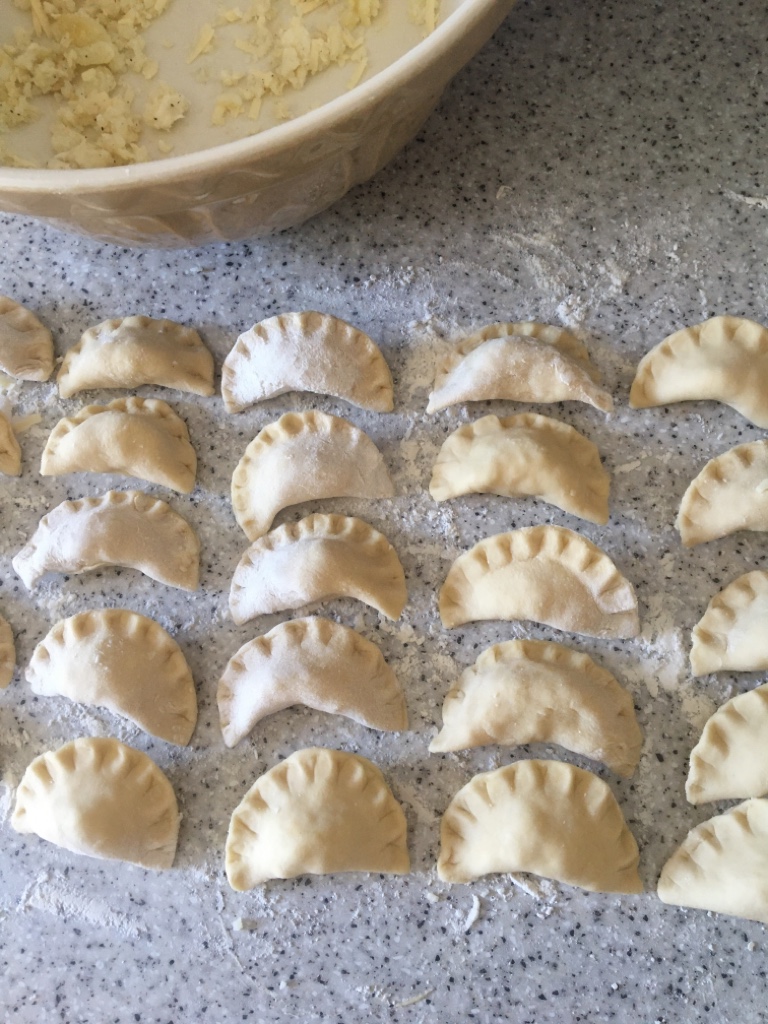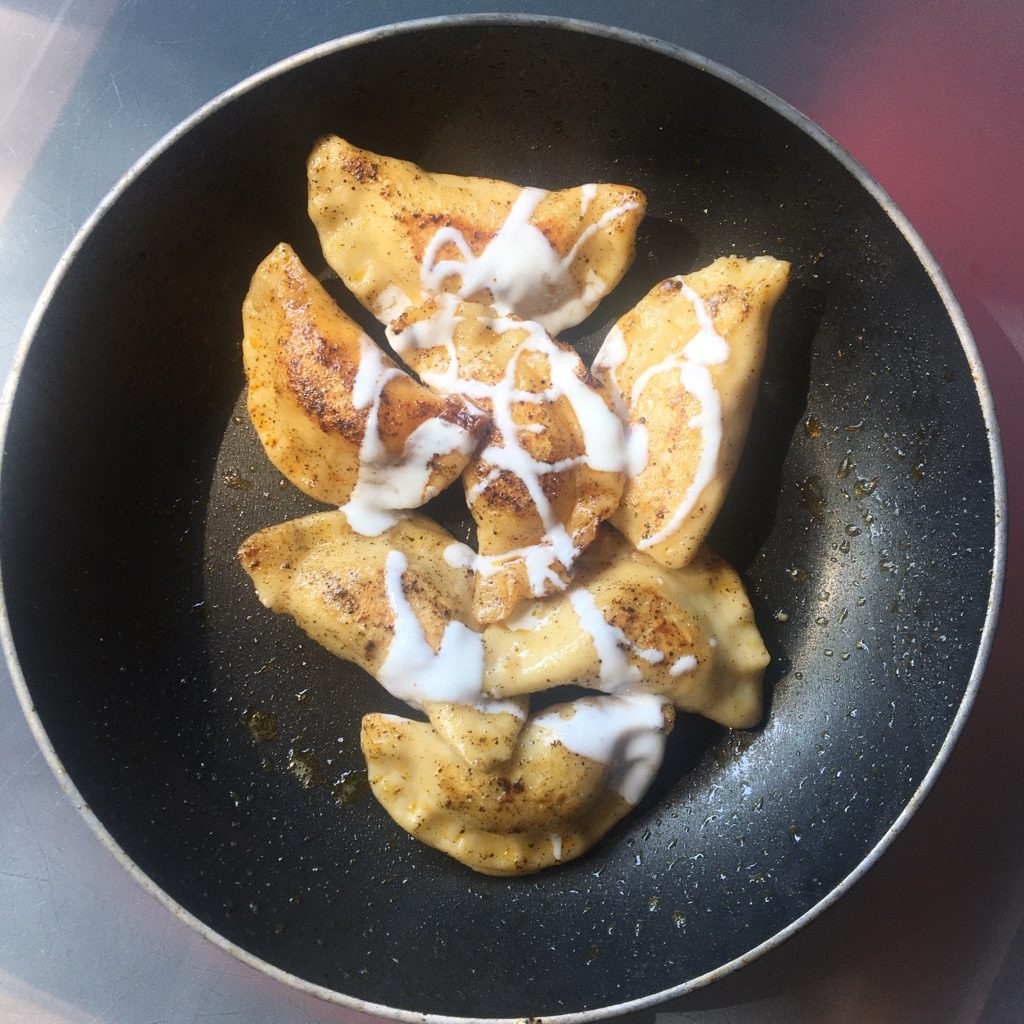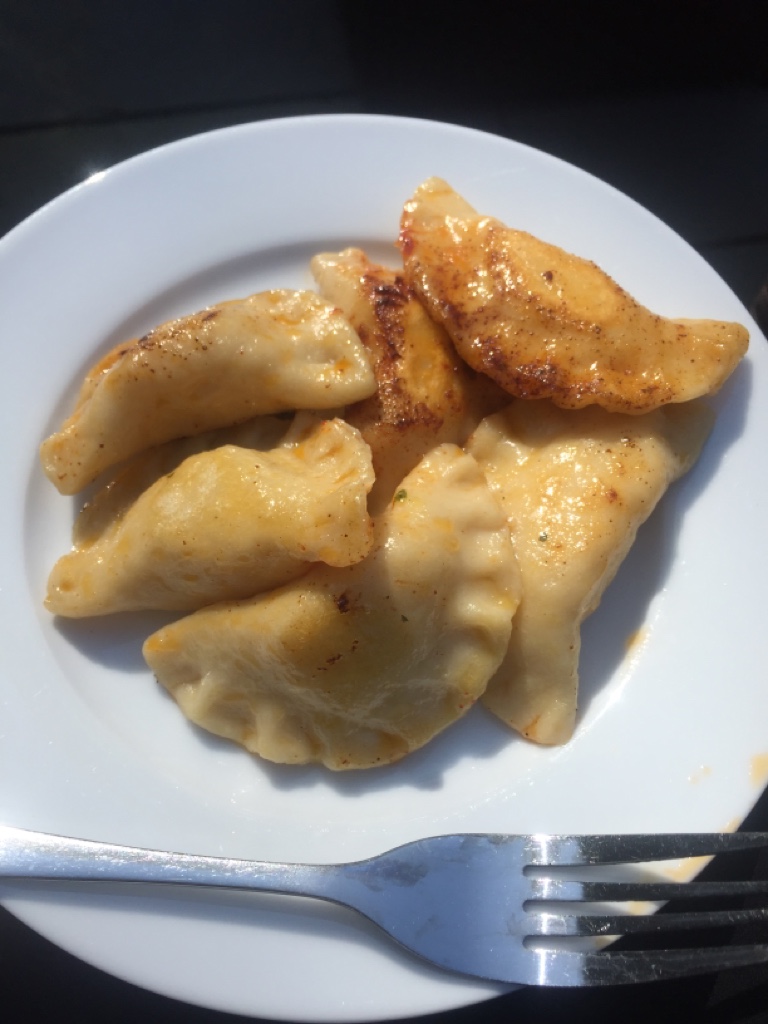Now that we’ve well and truly settled into lockdown-living, I’m not finding that I’ve hours of time where I’m feeling bored. Instead, some everyday tasks are expanding. Rather than rushing, I’m present. Rather than thinking ahead, I’m thinking about the moment. The simple task of making dinner can take longer than it used to, because other than work and one precious walk each day, how we spend our time has been temporarily simplified. These simple tasks can be a welcome distraction. There’s no rush to get dinner on the table. There’s no rush to do anything. As my friend put it yesterday, it’s all a bit mañana.
So what better time to reach into a cookbook called ‘Slow’.

I was bought this book for my birthday last year. It’s a beautiful book. It’s an absolute treasure and I just love the cover illustrations and copper foiling. The illustrations appear throughout the book, along with photos, recipes and useful guides to ingredients and techniques. I’ve coveted the Caldeirada Fish stew, admired the Aligot and lusted after the Lemon Surprise Tart, but other than a few ideas taken as inspiration from the book where I’ve read little snippets and leafed through the pages, I’ve not cooked any of it.
With a four-day Easter weekend stretched out ahead of me, I decided I’d try and make the Pierogi Dumplings. The only place I’ve had pierogi was at a food festival a couple of years ago. They were filled with potato, cheese and onion and finished on the hot plate to crisp them up a bit.
In ‘Slow’, Gizzi Erskine says that you can fill pierogi with “whatever you like”. The examples in the book are filled with roasted beetroot or potato and cheese. As I didn’t have beetroot, potato and cheese it was.
As we all know, shopping at the moment isn’t quite what we’re used to. Ordinarily, I’d think nothing of making an extra trip to the supermarket to grab a few bits for a weekend baking session. That’s not possible at the moment, so it turns out that I had to make a few swaps throughout the recipe. I replaced Pierogi or 00 pasta flour with plain flour and sour cream with natural yoghurt. The dough seemed to come together well after a short amount of kneading, so the swaps seemed quite successful. I wonder if once it’s cooked, it would be lighter texture with sour cream as it has a higher fat content?
After a short rest, the dough was ready to work with. It’s a wonderful dough to handle, although a little tricky to roll out to begin with as it’s quite springy. I wasn’t sure that it would make the 24 pierogi, but with a little second re-roll, I got 26 in the end. I don’t think a re-roll of the dough is advisable, it had toughened up a bit by then and was protesting under the rolling pin.
The filling was easy to prepare. I’d baked my potatoes the day before when I had the oven on, so it was just a case of spooning it out of the skins and mashing it together with the spices and grated cheese. I didn’t have parmesan either; it was missing a bit of the strength and tang from that, but still really tasty.
Assembling the pierogi was quite simple too. The dough was soft and malleable and the edges stuck together easily. It takes a bit of time and a deft hand, but it was a really nice task to take my time over. I’ve mentioned before about the therapy or mindfulness that I find from baking. It was the same here – just enough to keep the mind present and the hands busy.

Mine didn’t look anything like the example in the book, probably more like gyoza! Perhaps I need to twist the edges as they crimp together. More importantly, they stayed closed when they were cooked – result. After cooking in a light stock, I fried them off in batches with butter and paprika.

I might try making the Pork Meatloaf next or the Rhubarb & Custard Doughnuts (if I can get my hands on some bread flour at some point).

